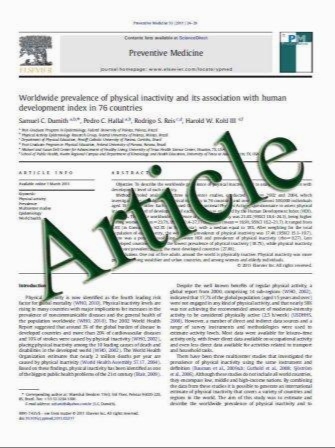Breast cancer and spider telangiectasias at diagnosis and its relation to histopathology and prognosis: a population-based study
- نوع فایل : کتاب
- زبان : انگلیسی
- مؤلف : Carolina Ellberg Helena Jernstro¨m Ha°kan Olsson
- چاپ و سال / کشور: 2011
Description
Angiogenesis is one of the hallmarks of breast cancer. The status of angiogenesis is important in therapy choice. Spider telangiectasias (telangiectasias) may reflect an increased ability to form vessels. Our first aim was to identify patient and tumor characteristics associated with the occurrence of telangiectasias at the time of breast cancer diagnosis. The second aim was to study the overall survival in relation to the occurrence of telangiectasias at the time of breast cancer diagnosis. A standardized questionnaire was used to interview 1682 consecutive breast cancer patients about risk factors between 1980 and 2009. Occurrence of telangiectasias at the time of breast cancer diagnosis on the upper thorax, head, and/or neck was recorded by one physician. In the cohort, 93 women (5.5%) had telangiectasias. Occurrence of telangiectasias was positively associated with weight, odds ratio (OR) 1.02 (95% confidence interval (CI) 1.00–1.05) per kg, ever-use of oral contraceptives OR 2.67(CI 1.55–4.63) and hormone replacement therapy OR 2.68(CI 1.63–4.39), and negatively associated with parity OR 0.45(CI 0.25–0.79). Telangiectasias were not present in patients with comedo breast cancer. Patients with occurrences of telangiectasias diagnosed before the age of 50 had a statistically nonsignificant worse overall survival, whereas the patients with occurrences of telangiectasias diagnosed at age 50 or after had a statistically significant better overall survival (P interaction = 0.016). The relationship between the occurrence of telangiectasias and the overall survival in the older patient-group was independent of ever-use of HRT. Hormonal risk factors for breast cancer were associated with the occurrence of spider telangiectasias. The occurrence of telangiectasias may reflect the angiogenic status of the tumor. We hypothesize that telangiectasias could be used as selection criteria for anti-angiogenic therapy in younger breast cancer patients. Therefore, patients with comedo breast cancers maybe a group that may benefit less from anti-angiogenic therapy.
DOI 10.1007/s10549-011-1707-8 Received: 9 May 2011 / Accepted: 27 July 2011


